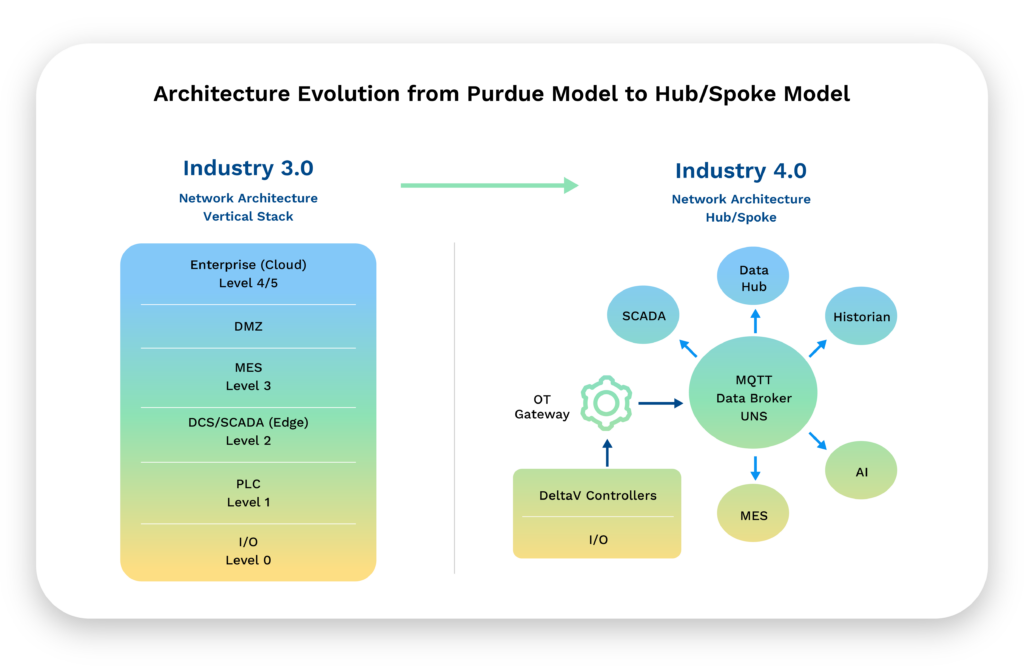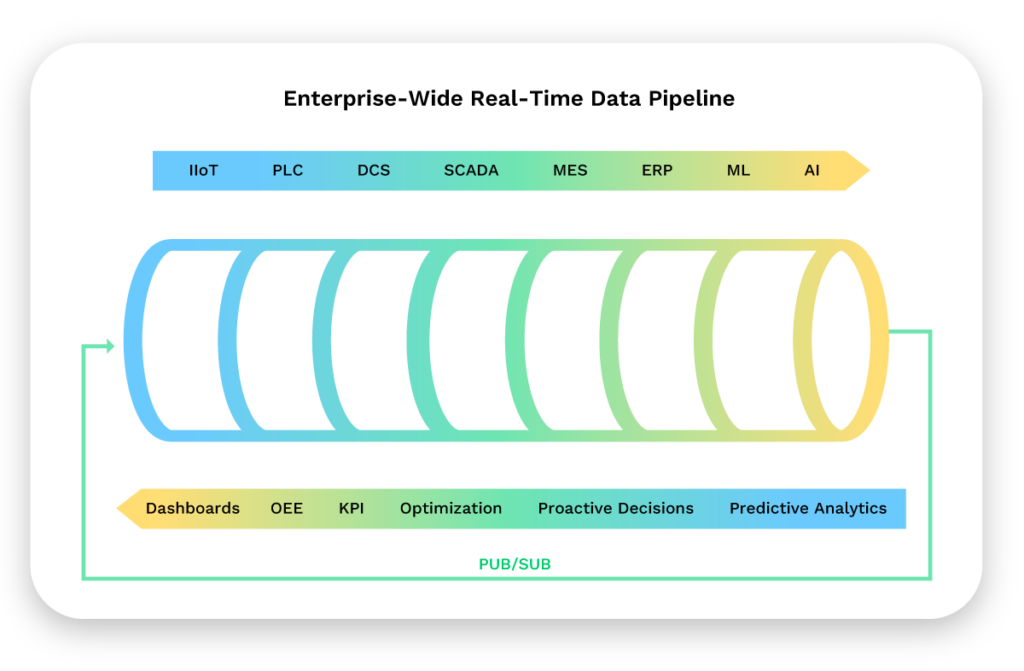The Ideal Architecture for Digital Transformation

Know the ‘Current State’ of Your Business AND
‘Future State’ of Your Business in Real Time.
As covered in my last article, the first steps toward a digital transformation are to develop a strategy, get buy-in, and create a roadmap aligned with the business. Now, you’re ready to select a proof-of-concept pilot project. Typically, the pilot should be small enough to be completed over a 3-4 month period and use an Agile project management approach. An Agile approach promotes flexibility, collaboration, and continuous improvement throughout the project lifecycle—which is particularly important for the introduction of a new technology. In addition, smaller projects are more easily funded and quick wins can help justify bigger capital investments as the scope grows.
The Data Conundrum
The process of digital transformation and the implementation of advanced technologies, such as Machine Learning (ML) and Artificial Intelligence (AI), require vast amounts of data. This data is not useful unless it can be interpreted in a meaningful way. Context adds meaning to raw data and transforms it into actionable information. We’ve all heard about the failures of Big Data projects due to lack of data contextualization.
The ability to transmit and contextualize large amounts of data throughout the enterprise requires rethinking how OT networks are architected. Traditionally, the main focus has been to protect the data behind firewalls, the argument being that opening ports in the firewalls begins to compromise the integrity of existing cybersecurity systems. The most common OT network architecture is the vertically stacked Purdue model, where hardware and software solutions are siloed, and vendor locked. In this scenario, unlocking the data requires custom protocols and licenses—not exactly a viable approach. Therefore, a new architecture has emerged, that is better suited for large amounts of data and enterprise-wide data buses, called the Hub/Spoke model.
The Emerging Hub/Spoke Model With UNS
A Hub/Spoke architecture uses: a low-bandwidth protocol called MQTT, an efficient data transmission method called publish/subscribe (or pub/sub), and data brokers that scale to high traffic volumes and provide redundancy. This network structure can communicate seamlessly with cloud applications because they are already standardized on MQTT. A framework, called the Unified Namespace (UNS), is superimposed on top of the Hub/Spoke network to further extend its capability as an enterprise-wide data hub. The combination—a Hub/Spoke network and UNS—forms the ideal infrastructure for an enterprise-wide data hub to support Industry 4.0 and predictive analytics, like ML and AI. Hub/Spoke is the backbone; MQTT data brokers provide the ability to transport large amounts of data; and the UNS provides a contextualized framework for interoperability and seamless data access.


Ultimately everything and everyone is plugged into the network. As a single source of truth, your UNS is a virtual representation of the business in real time which forms the basis for predictive analytics and actionable decisions. This real-time data is used to collect and analyze data/information to leverage ML/AI. ML predicts future outcomes based on past patterns and the current state. The layers of the business are integrated and operate based on data and information from all layers—in real time. Stakeholders know the ‘current state’ of the business in real time and stakeholders know the ‘future state’ of the business in real time.
Now that you’ve been exposed to Hub/Spoke and UNS, you probably have some questions about your selection of a proof-of-concept pilot. Please reach out to me to start a dialog.












